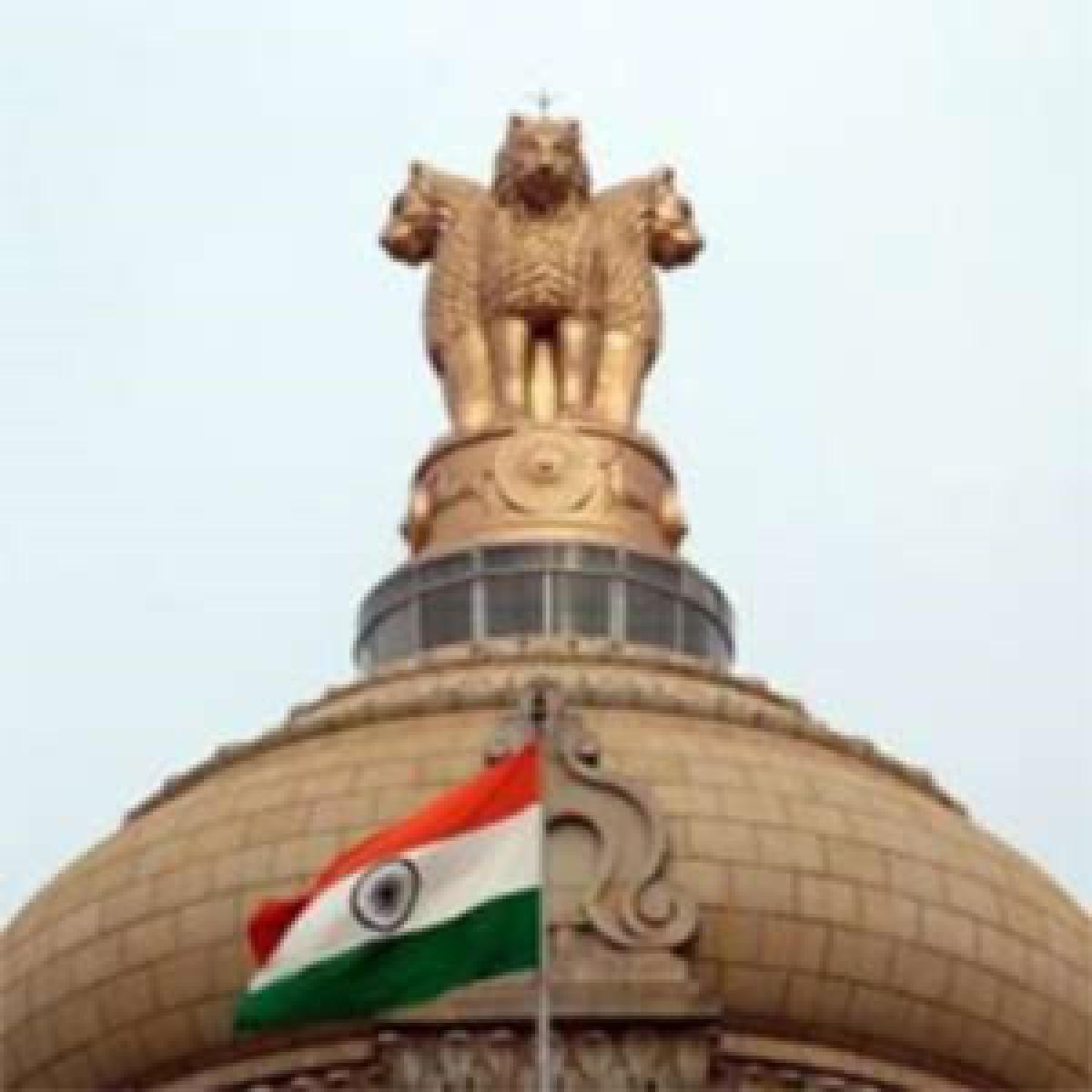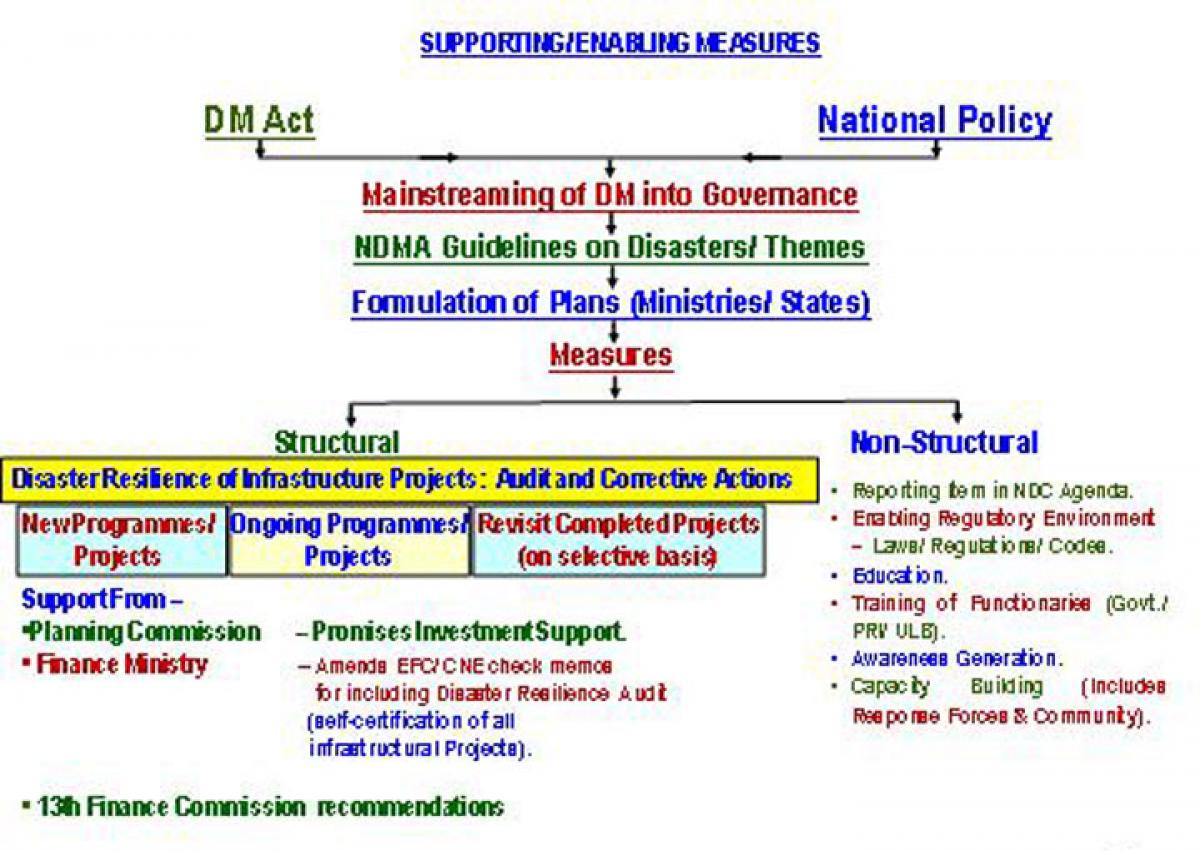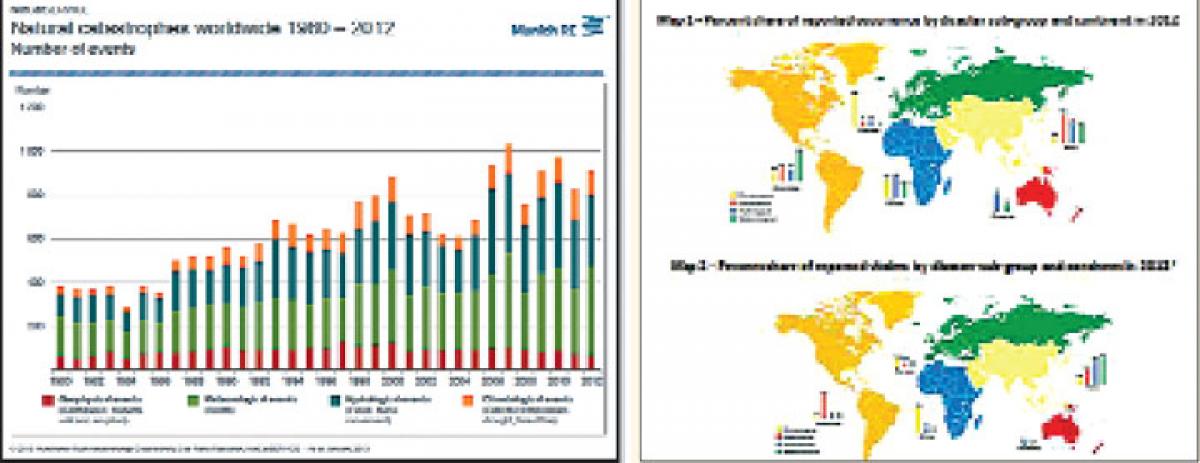Live
- 5 fabrics to purchase when visiting Gujarat
- South Korean ministry voices regret on Japan's 'pressure' over Line messenger
- Indians buying luxury homes more than ever, affordable housing sees 20 pc dip: Report
- SC releases CM Kejriwal on interim bail till June 1
- Harsher laws insufficient to curb political violence: German Justice Minister
- Nettru murder case, NIA arrests three
- 'Will always protect reservation for SC, ST and OBC', assures PM Modi
- Basava Jayanti celebrations grandly held in Gadwal district
- 12% children received no dose of measles vax: Study
- The importance of class 12 boards in college admissions
Just In

According to the International Federation of Red Cross and Red Crescent Societies, a disaster is a sudden, calamitous event that seriously disrupts the functioning of a community or society and causes human, material, and economic or environmental losses that exceed the community’s or society’s ability to cope with using itsown resources.
Disasters
According to the International Federation of Red Cross and Red Crescent Societies, a disaster is a sudden, calamitous event that seriously disrupts the functioning of a community or society and causes human, material, and economic or environmental losses that exceed the community’s or society’s ability to cope with using itsown resources.

Impact of disasters – importance of preparedness
Consequences of hazardous events include loss of life, property, livelihoods and damage to infrastructure, with long term outcomes including environmental degradation and economic slowdown among others. These can often be substantially mitigated through preventive and precautionary actions.
Maplecroft, the British risk assessor company rates India (along with six other countries namely Mexico, The Philippines, Turkey, Indonesia, Italy and Canada) as a country at a “high risk” to disasters in absolute terms. Different parts of India are prone to periodical disasters such as floods, earthquakes, cyclones, landslides etc.
The World Bankshas estimated that India loses upto 2% of the Gross Domestic Product(GDP) and 12% of central government revenuesannually on account of disasters. The study also concludes that a dollar spent on prevention/mitigation can save upto ten.
Nearer home,five districts of the erstwhile state of Andhra Pradesh (AP), mainly Mehabubnagar and Kurnool were, in the year 2009, ravaged by unprecedented floods.The damage was estimated to be of the order Rs. 12000 crores. In the same financial year (2009-10) the “Laila”cyclone caused extensive damage (1630 crores) around Bapatla in Guntur district.
A significant number as it represented, almost precisely, the estimated rate of growth AP’s GDP (Rs. 200065 crores at constant prices) at the rate of 5.04%. The loss caused by the two disasters worked out to 5.14%! Disasters affect unprepared communities more than others.
With no sense of immediate need, preparedness rarely enjoys the priority it deserves in the national agenda. The recognition and reward that acts of boldness and bravery attract, are rarely associated with prevention and preparedness. Thus, political leadership and administrations at the national, state and local levels have tended to neglect this critical aspect of Disaster Management (DM).
International Response
Steps taken internationally to organize a response to this growing threat include – The setting up, in 1979, of the Federal Emergency Management Agency (FEMA) in the USA
The formation in 1981 by the UN of the Office for the Coordination of Humanitarian Affairs (OCHA) – constitution of UN Disaster Management Teams (UNDMT) in disaster prone countries.
The establishment in 1986 of the Asian Disaster Preparedness Center (ADPC)
The observance, by the United Nations, of the International Decade for Natural Disaster Reduction (IDNDR) (1990’s)
Announcement by the United Nations in 1999 of the International Strategy for Disaster Reduction – (UNISDR)
The establishment in 2006, of the SAARC Disaster Management Centre
Paradigm shift in Disaster Management (DM) – away from the ‘R’s to the ‘P’s
Internationally, the need is now recognized for a paradigm shift from the reactive approach to a proactive regime –from relief and rescue - centric response to prevention, mitigation and preparedness- moving away from the ‘R’s to the ‘P’s. Dynamic forecasting of tropical cyclones by the India Meteorological Department (IMD) by introducing two additional stages-‘pre-cyclone watch’ and ‘post – landfall scenario’ and improved flood forecasting by the Central Water Commission (CWC) are examples ofrecent proactive innovations.
This shift necessitates an effort to identify and address the causal factors of disasters and their impact - through an ethic of prevention. Prudent management of natural resources, improved early warning and forecasting systems-and increased penetration of the messages, state-of-the-art Incident Response System (IRS), at the grassroots level and mainstreamingof DM concerns into the governance apparatusare all examples of good DM.
Disaster Management in India
IDNDR and UNISDR, were the beginning of a sincere attempt at the international level to recognize and deal with the need for effective DM.
DM Act 2005 – Constitution of Authorities The Government of India (GoI), in recognition of the importance of DM as a national priority, set up in August 1999, a High-Powered Committee. AnAll Party National Committee,constructed after the Gujarat earthquake, also made various recommendations on the preparation of DM plans and effective mitigation mechanisms. Parliament, on 23 December 2005, enacted the Disaster Management Act, (DM Act 2005), which envisaged the creation of the National Disaster Management of Authority (NDMA), and Authorities at the state and district levels, to spearhead a holistic and integrated approach to DM in India.
DM Act (2005) put in place the skeletal log frame of the DM structure.
The cascading architecture of the DM log - frame is a seamless continuum between the Act, the rules made thereunder, the National Policy the guidelines of NDMA on various disasters, the plans prepared by the central government/states departments backed by – a policy, authorities at all levels, supported by institutional framework, financial arrangements and duly enabled by a statutory environment.
The NDMA has, since its inception has issued a slew of guidelines on the management of various types of disasters (earthquakes, cyclone, floods etc.) and also put out reports pertaining to themes (including preparedness for pandemics, revamping of civil defence, role of non-governmental organizations etc.). There are now in place a National Disaster Response Fund and State Disaster Response Funds with the size of their corpus determent by the Finance Commission.
Flexi funds are also available with the central ministries/departments. These funds, together with normal Plan funds and those made available from provisions relating Corporate Social Responsibility (in the Companies Act and the Income Tax Act) and the Members of Parliament Local Area Development (MPLAD) Programme of the government of India are all available for preparing for threatening disasters or for actions required after an event.
The United Nations Development Programme (UNDP), in the meanwhile, added enormous value through the creation of awareness – in the governance apparatus on the one hand on the community on the other – of the importance of the new paradigm in DM, through its Disaster Risk Reduction Programme implemented in selected parts of the country.
Many significant steps have since been taken heralding the arrival of a new era of DM in India.
Check-memos prescribed by the government of India, which serve as inlimine entry points for acceptance by the Ministry of Finance of proposalsfrom otherministries/departmentsfor consideration by the Expenditure Finance Committee (EFC) and the Committee on non-Plan Expenditure (CNE),were amended in 2009. This was done to ensure that disaster - resilience is built into the design, architecture, engineering and construction technology ofstructures contemplated in such projects –to respond to the varying quality and pattern of disaster vulnerability in different parts of the country to different disasters.
During the preparation of the Eleventh Five Year Plan, the erstwhile Planning Commission, for the first time in December 2006,constituted a Working Group on DM and, in another first, included a separate chapter on DM in the Eleventh Plan Document.
The Twelfth Finance Commission also reviewed the financial arrangements for DM and made important recommendations - including theearmarking of Rs. 200 cr,Rs. 525 cr and Rs. 250 cr respectively,for the purpose ofstrengthening thefire services capacity building and creation of national reserves of material required for rescue/relief operations.
24 states have made disaster management plans. Gujarat has completed a vulnerability assessment and risk analysis. While Odisha and Kerala have enunciated DM policies Bihar and Maharashtra have inducted experts into their state authorities.
These welcome developments notwithstanding,many fundamental steps remain to be taken – mostly in the realm of prevention and preparedness.That only two states have enacted the Flood Plain Zoning Regulation (circulated in a draft form by GoI as early as in 1975!) is a typical illustration of the lukewarm response of the ministries/departments of GoI and the states/UTs to the exhortations of NDMA.
Trends of Disasters the Global Picture

By:Dr Mohan Kanda
(The Author is a retired officer of the Indian Administrative Service who was formerly Secretary to the Government of India, Ministry of Agriculture, Chief Secretary to the Government of Andhra Pradesh, Member, National Disaster Management Authority of India, Member of the Steering Committee (of the erstwhile Planning Commission) on the Agriculture and Allied Sectors for the 12th Five Year Plan, and headed the Crop Holiday Committee, Government of Andhra Pradesh, in the year 2011)

© 2024 Hyderabad Media House Limited/The Hans India. All rights reserved. Powered by hocalwire.com







